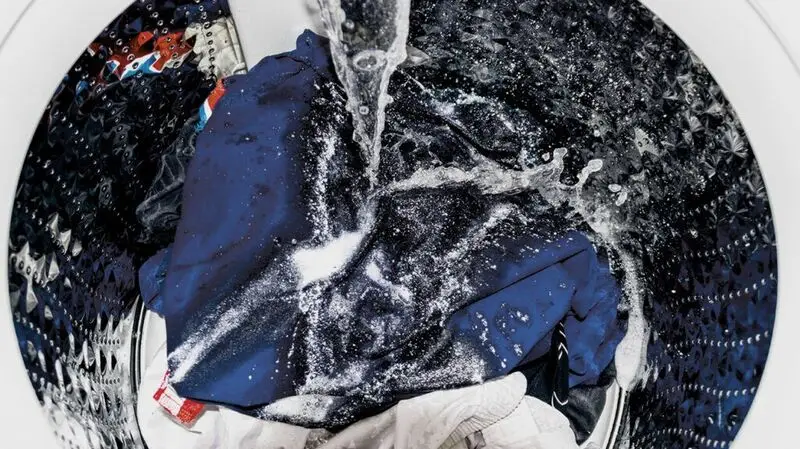- Metabolic dysfunction-associated steatotic liver disease (MASLD) can lead to liver fibrosis, which can lead to cirrhosis, liver cancer, and liver failure.
- Past studies also show there are some environmental risk factors that might increase a person’s risk for liver disease.
- A new study reports that a common chemical used in dry cleaning and for certain consumer products may triple a person’s risk for liver fibrosis.
Researchers estimate that about 4% of all deaths globally are caused by liver disease, an umbrella term encompassing any medical issues associated with the liver.
The most common type of liver disease is called metabolic dysfunction-associated steatotic liver disease (MASLD), which was previously known as nonalcoholic fatty liver disease (NAFLD).
Because of the buildup of fat in the liver, MASLD can lead to inflammation and scarring of liver tissue, which is known as liver fibrosis that can lead to other serious health conditions such as cirrhosis, liver cancer, and liver failure.
There are a number of risk factors for liver disease, including certain prescription medications, conditions like diabetes and metabolic syndrome, and lifestyle factors such as smoking, not exercising, eating an
Past studies also show there are some environmental risk factors that might increase a person’s risk for liver disease, such as
Now, a new study recently published in the journal
For this study, researchers analyzed health data from the
PCE is used in a few industries and consumer products, including:
- Adhesives and glues
- Brake cleaners
- Dry cleaning
- Metal degreasers
- Paint removers
- Silicone lubricants
- Spot removers
- Water repellents
“Liver disease is on the rise, and it’s important to understand what is contributing to these trends beyond traditional risk factors (e.g. alcohol, diabetes) to inform interventions,” Brian P. Lee, MD, a hepatologist and liver transplant specialist with Keck Medicine at the University of Southern California and lead author of the study, told Medical News Today. “PCE has been linked (to) liver damage in mice, but hadn’t been well studied in humans in the context of liver disease.”
In addition to liver damage, past studies have linked PCE exposure to kidney problems, neurotoxicity, and certain cancers, including bladder cancer and non-Hodgkin lymphoma.
At the study’s conclusion, researchers found that 7% of participants had detectable amounts of PCE in their blood, and individuals exposed to PCE were three times more likely to have significant liver fibrosis compared to those who were not exposed to PCE.
“Liver fibrosis is the main predictor of liver-related morbidity and mortality, meaning that the more liver fibrosis you have, the more likely you are to die from liver disease,” Lee said.
Lee explained that when PCE metabolizes in the liver, the metabolites react with liver cells to degrade the fat in the cell membrane. This initiates a chain reaction, causing inflammation and scarring, or fibrosis.
Scientists also discovered that for every one nanogram per milliliter increase in PCE concentration in the blood, a study participant’s chances of having significant liver fibrosis increased fivefold.
The dose makes the poison“This finding shows a dose-effect of PCE and liver fibrosis, which strengthens the potential link that PCE causes liver fibrosis, rather than just a correlation. Environmental toxins, like PCE, may be important contributors to liver disease. Doctors should ask patients about potential environmental exposures, and policymakers should enact policies that protect the public from environmental poisons.”
— Brian P. Lee, MD
“The next step is to translate these findings to action by informing screening strategies to detect liver disease earlier, and environmental policies that protect the public from environmental poisons like PCE that are harmful,” Lee added.
MNT spoke with Lee F. Peng, MD, PhD, chief of gastroenterology and hepatology at Hackensack Meridian Jersey Shore University Medical Center and professor of medicine at Hackensack School of Medicine in New Jersey, about this study. He commented that he was not surprised by its findings.
How some chemicals cause liver injury“
Halogenated hydrocarbons are notorious for causing liver injury. The prototypical agent is carbon tetrachloride, one of the most potent hepatotoxins known. Environmental factors that cause liver injury can lead to inflammation of the liver (hepatitis), which in turn can lead to scarring of the liver (hepatic fibrosis). If the liver scarring is severe enough, the patient can enter a state called cirrhosis, where the liver is so damaged that it can no longer heal itself.”
— Lee F. Peng, MD, PhD
“Some cirrhotic patients can proceed to liver failure, where the liver ceases to perform its usual functions adequately,” Peng continued. “Indeed, when I was the medical director of liver transplantation at my prior institution and as transplant hepatologist at another institution, we would see patients whose livers were so injured from toxic chemical exposures that they required liver transplantation.”
“It is important to continue identifying commercial chemicals in use that are hepatotoxic in order to prevent exposures in the home and workplace that can lead to liver injury,” he added.






